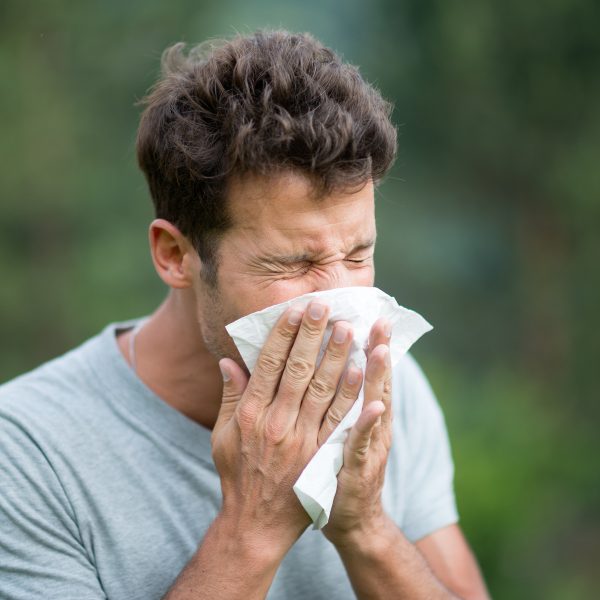Inviting all your family and friends for Christmas dinner is always fun, if a little exhausting. People expect the turkey, roast potatoes, and veggies. But it’s not that simple. Some people like beef as well as turkey, others consider Brussell sprouts the worst vegetables, and then, there are people with food allergies.
Unlike simple food preferences, allergies come with a higher risk. Even preparing the foods together carries the risk of an allergic reaction. Dealing with this problem can feel overwhelming. But it doesn’t have to.
With the right tips and tricks, you can host an allergy-friendly Christmas dinner with all the trimmings and festivities (and without the stress). Here’s how.

Consider the Biggest Allergy Risks
What foods pose the biggest allergy risks? Some are obvious. If a vegetarian requests a nut roast, it’s likely to be a risk to anyone with nut allergies. Unfortunately, not all Christmas-related allergies are so obvious. Here are some to consider:
- Nuts – Desserts, stuffing, nut roasts, oils.
- Gluten – Stuffing, bread, gravy, desserts.
- Dairy – Potatoes, sauces, desserts, chocolates.
- Eggs – Puddings, cakes, custards.
- Shellfish – Prawn cocktails, seafood starters.
- Alcohol – Sauces, puddings, trifles.
- Soy – Processed foods, gravies, desserts.
- Sesame – Bread, crackers, spreads.
- Mustard – Sauces, dressings, marinades.
- Celery – Soups, stocks, stuffing.
- Fish – Sauces, pâtés.
- Sulphites – Dried fruits, wines, processed foods.
- Chocolate – Milk, nuts, soy.
- Meat Substitutes – Nuts, soy, gluten.
- Coconut – Vegan dishes, desserts.
Remember, these are just the food-based allergens. Anyone with an alcohol sensitivity should be aware of certain chocolate and hidden forms of alcohol. Meanwhile, even the Christmas Tree can trigger asthma flare-ups and other respiratory allergies (known as “Christmas Tree Syndrome”).
Ask Your Guests
Nobody knows their allergies like your guests. If you’re struggling to remember who’s allergic to what, send an email or message asking them to RSVP with their dietary requirements. You could also ask for recipe ideas.
For example, if someone has a dairy allergy, you could ask for their dairy-free mashed potatoes recipe (or just stick with roasts). Your guests will have a clear idea of what they can and can’t eat, providing helpful advice and recipes to follow. It’s just one more weight off your mind.
Think About Your Food Prep
Hosting an allergy-friendly Christmas dinner is 80% prep and 20% action. One of the biggest risks to people with allergies is cross-contamination. It involves other foods coming into contact with the allergen due to residues on utensils and surfaces – even sharing an oven can be a risk.
Plan out your meal ahead of time. Ask yourself what needs to go in the oven and when. During the prep stages, it’s also important to be strict about using different chopping boards and knives to prepare allergen-free food. Keep a bowl of hot, soapy water ready to wash the surfaces and utensils immediately after preparing the trigger food.
Bring Your Own Food
Still struggling to come up with ideas for an allergy-friendly Christmas dinner? Or maybe you’ve planned the logistics and realised it’s impossible to cook everything without risking contamination? Whatever the reason, don’t be afraid to ask guests to bring their own dishes. After all, it’s only likely to be one or two things they can’t eat.
You can rest easy knowing the allergy aspect is covered, letting you concentrate on getting the rest of the dinner right for everyone else. It also means that you don’t have to do two versions of certain dishes. This is also the best option if there are two or more allergies at your Christmas dinner table.
Be Wary of Dessert
Dessert is something of a minefield – and one that gets forgotten. If you’re focused on cooking an allergy-friendly Christmas dinner, it’s easy to forget about the allergy risks in the puddings. Everything from Christmas pudding to the humble mince pie can pose a risk.
Eggs, chocolate, nuts, gluten, and more are all present in Christmas desserts. Plus, there are the niche ingredients you don’t see throughout the year. Always read the labels on desserts carefully. The allergens should be listed in bold writing.
If you’re making your own, that simplifies things. You can find allergy-free recipes of all the Christmas favourites online.
Take an Allergy Test
Hosting an allergy-friendly Christmas dinner doesn’t have to be stressful. The secret to success lies in understanding specific triggers for you or your guests. The Essential Allergy Test from Lifelab Testing is designed to identify reactions to 38 common allergens, including dairy, nuts, eggs, gluten, and more.
This easy-to-use home testing kit provides reliable insights by analysing a small blood sample. You’ll receive detailed results within just 3–5 days, allowing you to plan your festive feast with confidence. Knowing which allergens to avoid helps reduce the risk of reactions and ensures everyone can enjoy the festivities worry-free.
Why leave things to chance? Take control of your holiday planning today and make this Christmas safe, inclusive, and memorable for everyone at the table.





















